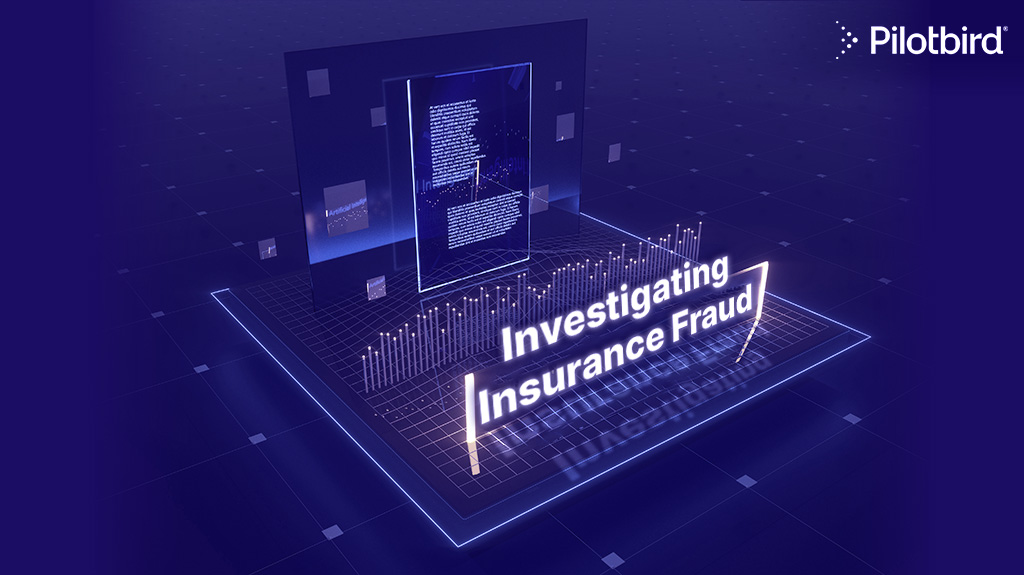Actuaries and insurance companies typically base their operations on a simple equation: superior data = accurate risk assessment and risk selection = higher profit margins. With the rapid technological advancements bringing about the rise in Artificial Intelligence (AI) and big data, actuaries and insurance companies need to compete for the best quality data and top-notch analytical tools to convert the data into business intelligence. One such tool that can be used for data analytics is predictive analytics. So what is it? And how does predictive analytics help improve the effectiveness of actuaries and insurance companies? Read on to learn more.
What is predictive analytics?
Predictive analytics typically involves analyzing big data (large data sets) to make inferences or identifying the meaningful relationship between various factors and using these relationships to better predict future events.
Predictive analytics is rapidly changing the dynamics of the insurance industry, which has been known to be reliant on data analysis since its inception. This reliance on data analysis by the insurance industry makes it uniquely suited to harness the power of predictive analytics. Based on a recent survey conducted by Willis Towers Watson, life insurers who use predictive analytics recorded a 60% increase in sales and a 67% reduction in expenses. This goes to show just how crucial predictive analytics in insurance is.
What data sources are used for predictive analytics?
Predictive analytics tools can be used to collect data from a wide range of internal and external sources to better understand and predict the behaviors of insured individuals and businesses. Actuaries and insurance companies collect data from agent interactions, telematics, smart homes, customer interactions, and even social media interactions to better manage their claims, relationships, and underwriting.
Another tool that players in the insurance industry use is the What-if analysis, which enables them to prepare for underwriting, data production, and evaluation of the impact brought about by an insurer changing book of business. By merging data from various sources, actuaries and insurance companies can develop comprehensive data that will be vital in assessing various attributes of their clients.
What insights do actuaries and insurance companies get from using predictive analytics?
1. Pricing and risk selection in underwriting
Predictive analytics arms insurers and reinsurers with more granular data and insurance modeling analytics which they can use to build better products that are more suited to the dynamic insurance market conditions, risk concentrations, and risk patterns. According to a Willis Towers Watson report, 53% of risk businesses use predictive analytics for pricing and product innovation.
Simply put, through predictive analytics, historical costs, expenses, claims, and profits can be projected into the future to allow insurers to dynamically adjust their premiums to meet their costs and market conditions.
Up until now, customizing policies at the personal level was somewhat a challenge. Nonetheless, with predictive analytics, insurers can now use dynamic pricing models based on a customer’s behavioral signals, predicted risk, and buying preferences.
2. Identification of fraud risks
One of the major concerns in the insurance industry is not just the high number but the overall financial impact of fraud cases (some fraud cases can be large financially). While most insurance companies strive to battle fraud cases, often, their efforts are usually futile. According to the Coalition Against Insurance Fraud, $80 billion is lost to fraud cases in the US alone. A different study conducted by the FBI, found that insurance fraud losses across all non-health insurance were as high as $40 billion, costing an average American family $400-700 in increased premiums per annum.
Using predictive analytics can help carriers identify fraudulent activities and also prevent them by pursuing corrective measures. Insurers can use predictive modeling for fraud detection. Where a human fails, predictive modeling and big data can easily pinpoint mismatches between the insured person and the third parties involved in the claim.
Also, predictive analytics can allow the insurer to monitor the social media account of the insured party for any fraudulent activities using data gathered upon settling a claim.
3. Automation of insurance claims
Automation of digital claims is one of the significant technological advancements in the insurance industry. Through predictive analytics, claims can be settled as fast as within 3 seconds. All an insurer has to do is upload information related to a given claim, such as the damage to a car and an estimate of what they think the payout should be. After that, the software will compare the image to a database of similar images, determine the extent of the damage and then quote the figure that the insurer should pay for the damage.
4. Identifying customers at risk of cancellation
Predictive analytics can help insurance companies and actuaries to identify high-risk customers who require unique attention—for instance, those who are more likely to cancel or lower their coverage. More advanced predictive analytics tools help reduce churn by 20%. It does this by identifying customers who are not satisfied with their current coverage and their reasons for not being happy.
Having this knowledge in hand will be a game-changer since it will allow the insurer to reach out to the client and offer them a personalized service in a bid to alleviate their potential concerns. Without predictive analytics, insurers would find it hard to identify customers at risk of cancellation by purely using their instincts.
5. Data management and modeling
According to Zion Market Research, the global market for predictive analytics will reach 10.95 billion by 2022. One of the reasons behind this growth is the capability of predictive analytics to transform data into future insights. It accomplishes this by aiding in forecasting customer behavior, supporting the underwriting process, building a robust customer profile, estimating potential profitability, among other tasks.
6. Identification of potential markets
Predictive analytics can give insurers a 360-degree view of their customers by aggregating data from different touchpoints that a client may use to engage with a company’s products. Majority (86%) of executives who have been using predictive analytics to market their services recorded an increase in profits.
By using predictive analytics, insurers can easily and accurately consolidate data that they can use to generate new insights that paint a clear picture about their clients. Carriers can use this information to understand the needs of their clients and identify a product that will satisfy those needs in the best way possible.
7. Cost reduction and driving of internal efficiencies
Predictive analytics can help insurers pinpoint outlier claims (claims that unexpectedly become high-cost losses). It does this by reviewing current and previous claims for any similarities and then automatically sending alerts to claims specialists. The advanced notice on potential losses helps insurers cut down the impact of outlier claims. According to a Willis Towers Watson Report, 67% of companies reported that predictive analytics helped them reduce costs. Besides that, predictive analytics can help carriers prioritize their claims to save money, resources, and time –not to mention increase customer satisfaction and retention.
Bottom line
Artificial intelligence and predictive analytics have never been more important to implement across various fields, like insurance, hiring agencies, vendors, etc. Using cutting-edge technology is your best bet for fending off competition and remaining relevant in the highly competitive insurance world. To effectively do that, you’ll need to partner with the best insurance analytics provider. That’s what Pilotbird offers – predictive analytics tools for group underwriting and fraud detection. We empower and enlighten insurance teams to better score risks and detect fraud by analyzing social data points. When you are ready to harness the power of predictive analytics for insurance, contact Pilotbird to discuss an opportunity to support your team.
Sources
Clarke, G. (2019, January 21). How Your Insurance Quote Is Powered By Artificial Intelligence. Forbes.com.https://www.forbes.com/sites/ginaclarke/2019/01/21/how-your-insurance-quote-is-powered-by-artificial-intelligence/?sh=6491b1db2811
Coalition Against Insurance Fraud.(a.n.d). Fraud Stats. https://insurancefraud.org/fraud-stats/
Edwards, J. (2019, August 16). What is predictive analytics? Transforming data into future insights. CIO Africa. https://www.cio.com/article/3273114/what-is-predictive-analytics-transforming-data-into-future-insights.html
Federal Bureau of Investigation. (2010, March 17). Insurance Fraud Report.https://www.fbi.gov/stats-services/publications/insurance-fraud
Rizzi, S. (2009). What If Analysis. In: LIU L., ÖZSU M.T. (eds) Encyclopedia of Database Systems. Springer, Boston, MA. https://doi.org/10.1007/978-0-387-39940-9_466
Schreiber, D. (2016). How AI Jim Broke a World Record Without Breaking a Sweat. Lemonade.com. https://www.lemonade.com/blog/lemonade-sets-new-world-record/
Watson, T. (2019, July 8). The Financial Rationale for Predictive Analytics. Life Predictive Analysis Survey Report.https://www.willistowerswatson.com/en-US/Insights/2019/07/the-financial-rationale-for-predictive-analytics
Watson, T. (2020, November 25). Improved performance and customer centricity drive momentum in the use of predictive analytics by life insurers. https://www.willistowerswatson.com/en-CH/News/2020/11/improved-performance-and-customer-centricity-drive-momentum-in-use-of-predictive-analytics-by-life
Yale, M. (2018, January 22). Predictive Analytics to Reduce Churn: Subscription Model. Jungleworks.com. https://jungleworks.com/predictive-analytics-reduce-churn/
Zion Market Research. (2018, March 2). Trends in predictive analytics market size & share will reach 10.95 billion by 2022. Intrado GlobeNewswire.com. https://www.globenewswire.com/news-release/2018/03/02/1414176/0/en/Trends-in-Predictive-Analytics-Market-Size-Share-will-Reach-10-95-Billion-by-2022.html


Leave a Comment
Your email address will not be published. Required fields are marked *